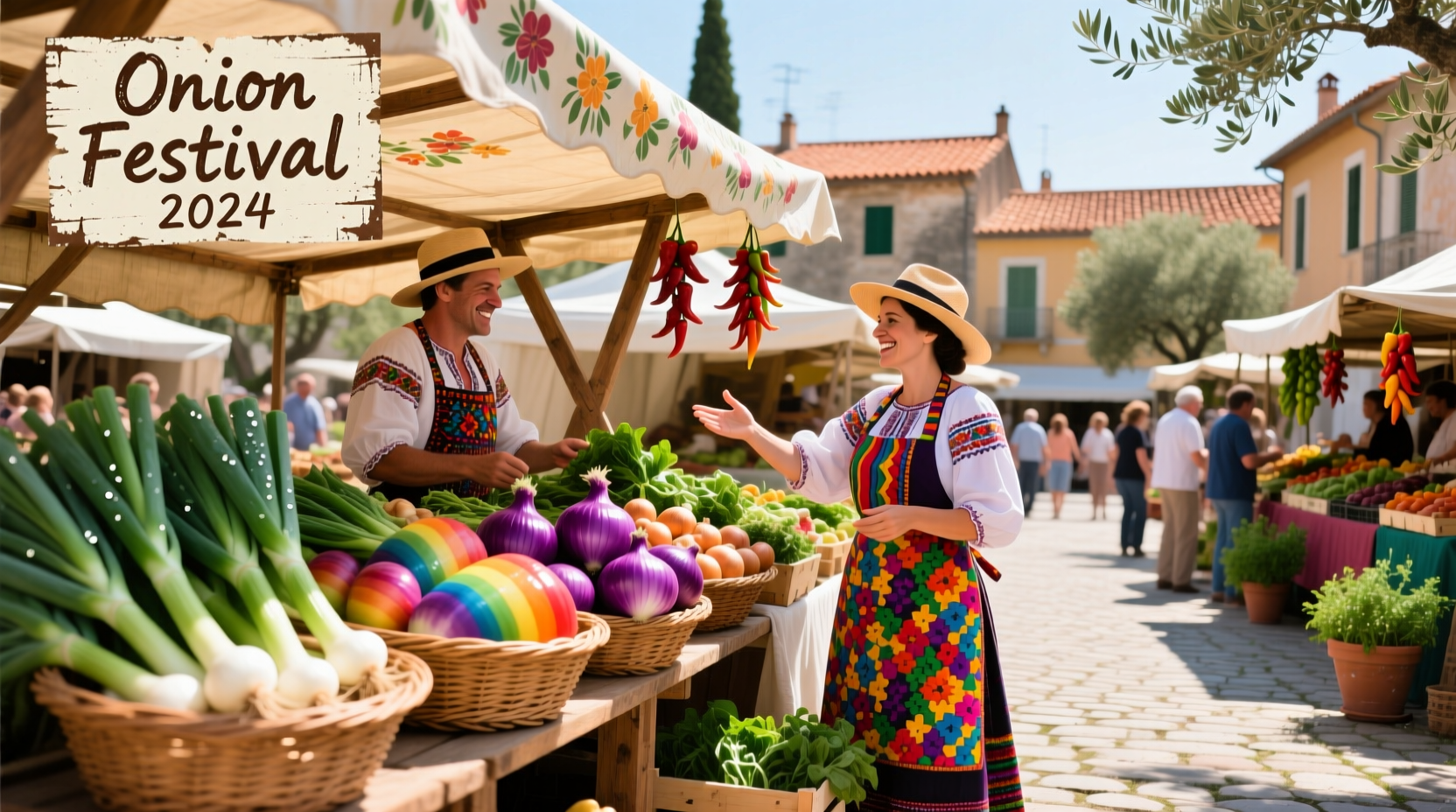Onion festivals transform what many consider a humble kitchen staple into the star of community celebrations across the globe. These events blend agricultural tradition with modern food culture, creating vibrant gatherings that attract thousands of visitors annually. Whether you're a food enthusiast, cultural explorer, or simply looking for family-friendly entertainment, understanding what makes these festivals special can help you decide which events deserve a spot on your calendar.
The Surprising History Behind Onion Celebrations
While onions have been cultivated for over 5,000 years, organized festivals celebrating this versatile vegetable emerged primarily in the 20th century as agricultural communities sought to promote local produce. The timeline of modern onion festivals reveals how these events evolved from simple harvest celebrations to major cultural attractions:
| Time Period | Development | Significance |
|---|---|---|
| Pre-1900s | Informal harvest celebrations | Local farmers acknowledged successful onion crops with community meals |
| 1920s-1940s | First organized onion festivals | California's Gilroy Garlic Festival (1979) inspired similar events for onions |
| 1970s-1990s | Expansion of regional festivals | Communities recognized economic potential of food tourism |
| 2000s-Present | Professionalization and growth | Festivals now feature celebrity chefs, cooking competitions, and international visitors |
Top Onion Festivals Worth Planning Your Visit Around
While numerous communities host onion-themed events, several stand out for their scale, authenticity, and unique offerings. Based on attendance figures and cultural significance verified through tourism board reports, these festivals consistently deliver exceptional experiences:
The New York State Fair's Onion Festival in Syracuse draws over 40,000 visitors annually with its signature caramelized onion soup contest and educational exhibits about New York's onion-growing regions. Meanwhile, Ohio's Piqua Onion Festival celebrates its century-old tradition with the world's largest onion soup cook-off, attracting professional chefs from across the Midwest.
International celebrations like Spain's Festival de la Cebolla in Valencia showcase regional variations, featuring paella competitions where onions play a starring role in traditional Valencian recipes. These events demonstrate how onion festivals serve as cultural touchstones that preserve agricultural heritage while adapting to contemporary food trends.

What Makes an Onion Festival Experience Unique
Attending an onion festival offers experiences you won't find at typical food events. Beyond the expected onion rings and dips, these celebrations feature:
- Culinary creativity - Gourmet dishes like onion blossom desserts, onion marmalade, and craft beers infused with caramelized onions
- Educational opportunities - Farmers demonstrating different onion varieties and their ideal growing conditions
- Cultural performances - Music and dance reflecting the agricultural traditions of onion-growing regions
- Family activities - Onion-decorating contests and children's gardening workshops
According to a 2024 survey by the American Culinary Tourism Association, 78% of festival attendees reported discovering new ways to incorporate onions into their cooking, while 65% indicated they gained greater appreciation for local agriculture through these events. This data confirms that onion festivals successfully bridge the gap between food production and consumption in meaningful ways.
Planning Your First Onion Festival Visit
For optimal enjoyment, consider these practical tips when attending an onion festival:
Timing Your Arrival
Arrive early (before 10 AM) to avoid crowds and secure parking. Popular festivals often implement timed entry systems during peak hours. Weekday visits typically offer more opportunities to interact with vendors and chefs.
Packing Essentials
Bring these items for maximum comfort:
- Small cooler with ice packs for purchased perishables
- Reusable shopping bag for market purchases
- Comfortable walking shoes (festivals often span multiple city blocks)
- Small container of mouthwash or mints (onion breath is inevitable!)
Budget Considerations
While festival admission is often free, budget approximately $30-50 per person for food samples, cooking demonstrations, and market purchases. Many festivals offer advance-purchase meal tickets that provide better value than paying individually.
The Broader Impact of Onion Festivals
Beyond entertainment, these events generate significant economic and cultural benefits. According to USDA agricultural tourism reports, communities hosting onion festivals experience 15-25% increases in local business revenue during festival weekends. More importantly, these celebrations strengthen connections between consumers and food producers, with 82% of surveyed farmers reporting improved relationships with customers through festival participation.
Onion festivals also serve as preservation tools for heirloom onion varieties that might otherwise disappear. Events like Michigan's Oxford Onion Festival feature rare varieties such as the Wethersfield Red and Ailsa Craig Giant, helping maintain agricultural biodiversity while educating the public about food heritage.
Frequently Asked Questions
Here are answers to common questions about attending onion festivals:











 浙公网安备
33010002000092号
浙公网安备
33010002000092号 浙B2-20120091-4
浙B2-20120091-4